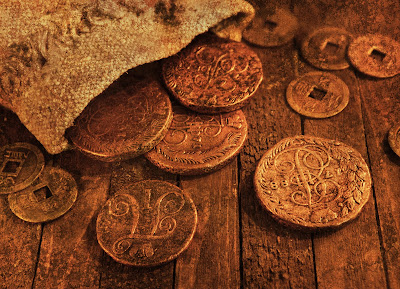The long-held view that coin collecting began with the Italian Renaissance has been challenged by evidence that the activity is even more venerable. Suetonius (ad 69–122) relates in his De vita Caesarum (Lives of the Caesars; Augustus 75) that the emperor Augustus was fond of old and foreign coins and gave them as gifts to his friends. In addition to this account and a variety of other literary accounts of collecting from Greek and Roman sources, there is tangible archaeological evidence that coins have been collected at least from the Roman era and probably for as long as they have existed. For example, a hoard of some 70 Roman gold coins found at Vidy, Switzerland, did not contain any two specimens of the same type, which implies that the coins were collected during the period of Roman rule in that town.
The broader field of art collecting, for which specific and reliable accounts do exist, began in the 4th or 3rd century bc. Since coins of that period are universally recognized as works of art, and since they were among the most affordable and transportable objects of the art world, it is not surprising that they would have been collected even then. Certainly, they were appreciated for more than their value as currency, because they were often used in jewelry and decorative arts of the period.
During the reign of Trajanus Decius (ad 249–251), the Roman mint issued a series of coins commemorating all of the deified emperors from Augustus through Severus Alexander. The designs on these coins replicated those of coins issued by the honoured rulers—some of the original coins being nearly 300 years old by that time. It would have been necessary for the mint to have examples of the coins to use as prototypes, and it is hard to see such an assemblage as anything but a collection. In ad 805 Charlemagne issued a series of coins that very closely resemble the style and subject matter of Roman Imperial issues—another example of collected coins providing inspiration for die engravers of a later era. The Nestorian scholars and artisans who served the princes of the Jazira (Mesopotamia, now Iraq, Syria, and Turkey) in the 12th and 13th centuries designed a magnificent series of coins with motifs based on ancient Greek and Roman issues. Some of these so accurately render the details of the originals that even the inscriptions are faithfully repeated. Others were modified in intriguing ways. The only difference, for example, between the reverse of a Byzantine coin of Romanus III and its Islamic copy is that the cross has been removed from the emperor’s orb in deference to Muslim sensibilities. The great variety and the sophisticated use of these images reveal the existence of well-studied collections. The eminent French numismatist Ernest Babelon, in his 1901 work Traité des monnaies Grecques et Romaines, refers to a manuscript dating to 1274, Thesaurus magnus in medalis auri optimi, which recorded a formal collection of ancient coins at a monastery in Padua, Italy. Petrarch (1304–1374), the famed humanist of the Italian Renaissance, formed a notably scientific and artistic collection of ancient coins. Source


No comments:
Post a Comment